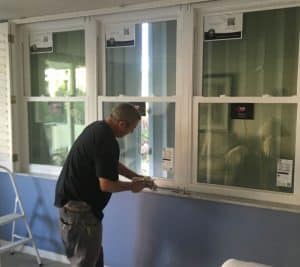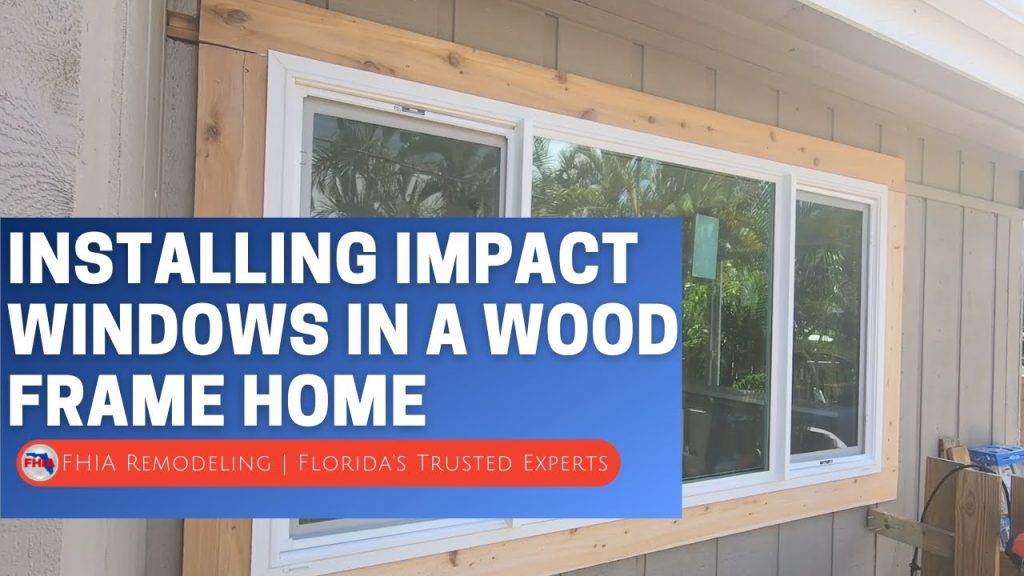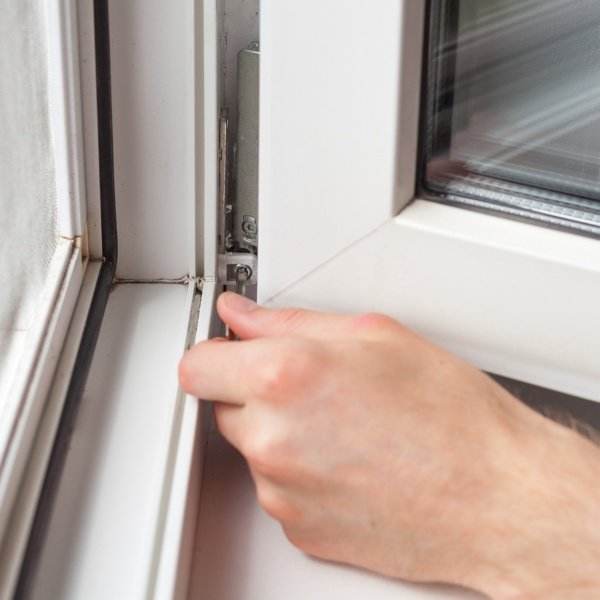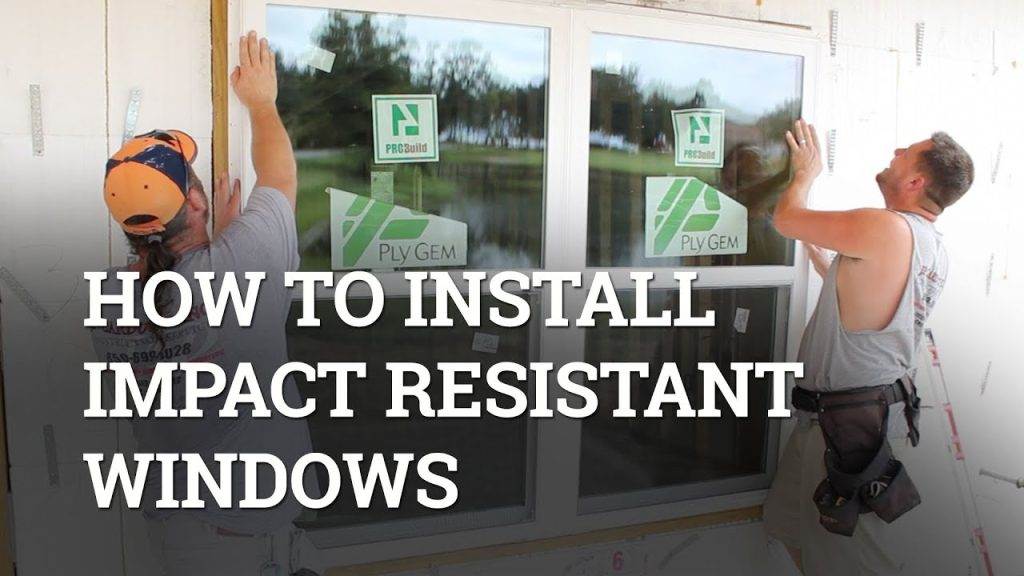So you’re thinking about installing impact windows and doors yourself? It’s a tempting idea, especially if you’re handy and enjoy the satisfaction of completing a DIY project. But before you grab your tools and start tearing out your old windows, there are a few things you should know. While it is technically possible to install impact windows and doors yourself, it’s not a task for the faint of heart. These specialized windows and doors are designed to withstand high winds and impact from flying debris, making the installation process more complex than your average window replacement. Plus, there are building codes and regulations to consider, not to mention the risk of making costly mistakes. So, while it’s admirable to want to take on the challenge, it’s important to weigh the pros and cons and determine if hiring a professional might be the smarter choice.
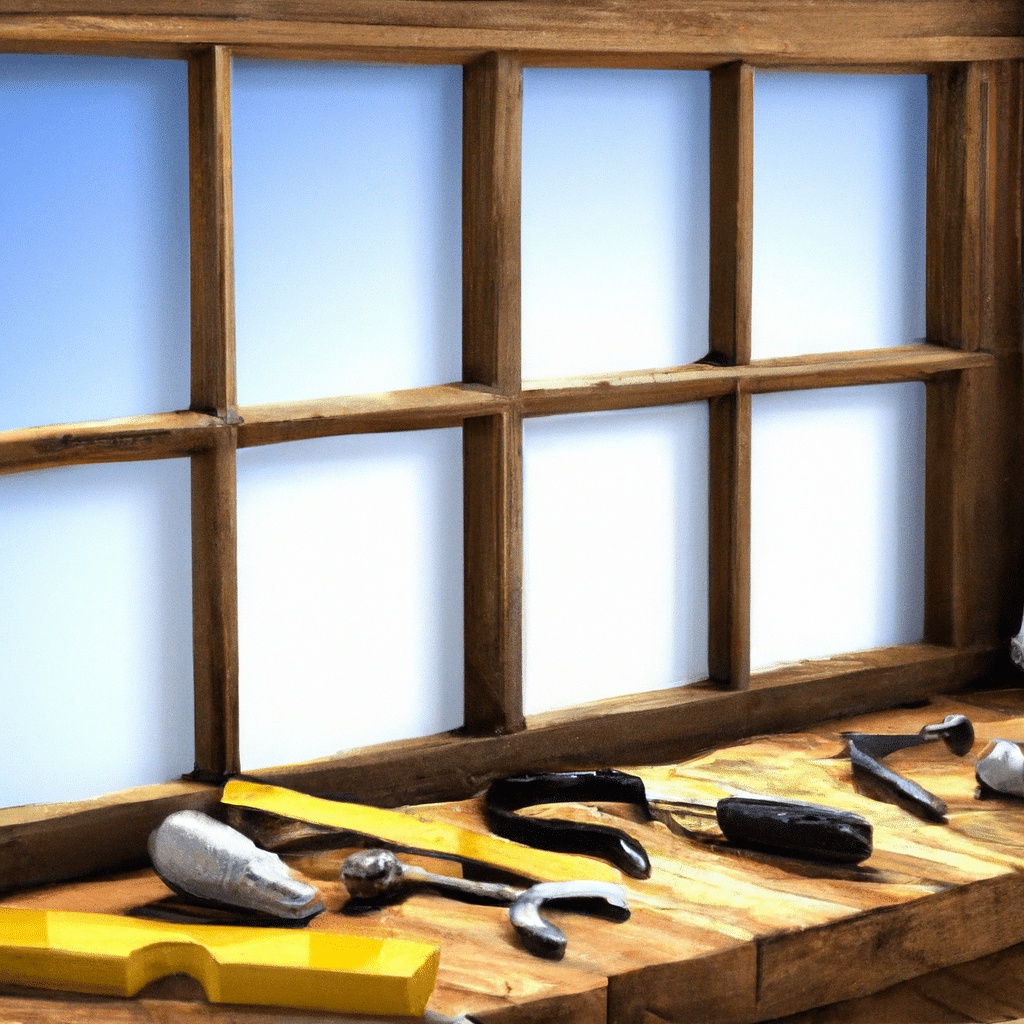
Benefits of Impact Windows and Doors
Increased Hurricane Protection
When it comes to protecting your home from the devastating effects of hurricanes, impact windows and doors are an excellent choice. These specially designed windows and doors are constructed with reinforced frames and impact-resistant glass, making them extremely durable and able to withstand strong winds and flying debris. By installing impact windows and doors, you can have peace of mind knowing that your home is well-protected during hurricane season.
Enhanced Energy Efficiency
In addition to providing hurricane protection, impact windows and doors also offer enhanced energy efficiency. The impact-resistant glass used in these windows and doors helps to reduce heat transfer, keeping the interior of your home cooler in the summer and warmer in the winter. This can lead to significant energy savings and lower utility bills. By investing in impact windows and doors, you not only protect your home but also improve its energy efficiency.
Reduced Noise Transmission
If you live in a noisy neighborhood or near a busy street, you know how frustrating it can be to constantly hear outside noises inside your home. Impact windows and doors can help to reduce noise transmission, creating a quieter and more peaceful living environment. The impact-resistant glass acts as a sound barrier, blocking out unwanted noise and allowing you to enjoy a quieter and more serene atmosphere in your home.
Improved Home Security
When it comes to home security, impact windows and doors are a great addition. The reinforced frames and impact-resistant glass make it extremely difficult for intruders to break into your home. Unlike traditional windows and doors, impact windows and doors are designed to withstand forced entry attempts, providing an extra layer of protection for your home and your family. By installing impact windows and doors, you can significantly improve the security of your home.
Factors to Consider Before DIY Installation
Skill and Experience
Installing impact windows and doors is a complex task that requires a certain level of skill and experience. If you have prior experience with home improvement projects and feel confident in your abilities, DIY installation may be an option for you. However, if you have limited experience or are unfamiliar with the installation process, it is advisable to hire a professional installer to ensure the job is done correctly.
Building Codes and Permits
Before embarking on a DIY installation project, it is important to familiarize yourself with the building codes and permit requirements in your area. Installing impact windows and doors may require obtaining permits and ensuring compliance with specific building codes. Failure to obtain the necessary permits or adhere to the building codes can lead to fines and potential legal issues.
Tools and Equipment
Installing impact windows and doors requires specific tools and equipment to ensure proper installation. These may include power tools, measuring devices, sealant applicators, and more. Before deciding on a DIY installation, consider whether you have access to the necessary tools and equipment or if you will need to purchase or rent them.
Time and Effort
DIY installation can be time-consuming and labor-intensive. Installing impact windows and doors involves multiple steps, including measuring, removing existing windows and doors, installing frames, attaching glass panes, and more. Consider whether you have the time and physical capability to complete the installation yourself. It is important to allocate enough time for the project and be prepared for any unexpected delays or challenges that may arise.

Step-by-Step Guide for DIY Installation
1. Determine Window and Door Types
The first step in DIY installation is to determine the types of impact windows and doors you want to install. Consider the design, size, and style of the windows and doors that will best suit your home. Take into account factors such as aesthetic appeal, functionality, and energy efficiency.
2. Measure and Order Impact Windows and Doors
Accurate measurements are crucial when ordering impact windows and doors. Measure the dimensions of the window and door openings carefully to ensure a proper fit. Consult with the manufacturer or supplier to determine the correct size and type of impact windows and doors for your specific needs.
3. Prepare the Workspace
Before you can begin the installation process, it is essential to prepare the workspace. This includes clearing the area around the windows and doors, removing any obstructions or furniture, and ensuring a clean and safe work environment. Take the necessary precautions to protect flooring, walls, and surrounding areas from potential damage during the installation process.
4. Remove Existing Windows and Doors
Carefully remove the existing windows and doors, following the manufacturer’s instructions and safety guidelines. Take your time to avoid damaging the surrounding structure or causing injury. Dispose of the old windows and doors properly, following local regulations for recycling or disposal.
5. Install Window and Door Frames
Once the existing windows and doors are removed, it is time to install the frames for the impact windows and doors. Follow the manufacturer’s instructions and use the appropriate tools and materials to ensure a secure and proper fit. Take extra care to ensure that the frames are level and plumb for optimum functionality and aesthetic appeal.
6. Attach Impact Glass Panes
With the frames in place, it is time to attach the impact glass panes. Follow the manufacturer’s instructions for proper installation, taking care to align the glass panes correctly within the frames. Ensure that the glass panes are securely fastened and sealed to prevent any water infiltration or air leakage.
7. Secure Seals and Weatherstripping
To enhance energy efficiency and prevent drafts, secure seals and weatherstripping should be installed around the frames. Follow the manufacturer’s guidelines for applying the seals and weatherstripping, ensuring a snug and effective seal. This will help to reduce heat transfer and enhance the overall energy efficiency of the impact windows and doors.
8. Test Operation and Functionality
Once the installation is complete, carefully test the operation and functionality of the impact windows and doors. Open and close them to ensure they operate smoothly. Check for any areas that may require adjustment, such as tight spots or misaligned frames. Make any necessary adjustments to ensure proper function.
9. Final Touches and Cleanup
After testing the operation and functionality, complete any final touches to enhance the appearance and functionality of the impact windows and doors. This may include applying trim, painting, or caulking. Once these final touches are completed, thoroughly clean up the workspace, removing any debris or materials used during the installation process.
Benefits of Hiring Professional Installers
Expertise and Experience
One of the significant benefits of hiring professional installers for impact windows and doors is their expertise and experience. Professional installers have the necessary knowledge and skills to ensure a proper and efficient installation. They are familiar with the best practices and techniques for installing impact windows and doors, minimizing the risk of errors or complications.
Compliance with Building Codes
Professional installers are well-versed in local building codes and permit requirements. They understand the regulations and standards that must be met when installing impact windows and doors. By hiring professionals, you can be confident that the installation will comply with all necessary building codes, providing peace of mind and avoiding potential legal issues.
Warranty and Insurance Coverage
When you hire professional installers, you typically receive warranty and insurance coverage. Many manufacturers offer warranties on their impact windows and doors, but these warranties may be voided if the installation is not done by professionals. By hiring professionals, you ensure that the installation is covered by warranty, providing added protection for your investment.
Time and Convenience
Installing impact windows and doors can be a time-consuming and labor-intensive process. By hiring professionals, you save valuable time and effort. Professional installers have the necessary tools, equipment, and expertise to complete the installation efficiently and effectively. This allows you to focus on other priorities without the stress and hassle of a DIY installation.

This image is property of pixabay.com.
Cost Comparison: DIY vs Professional Installation
Material Costs
When comparing the costs of DIY installation versus professional installation, it is essential to consider material costs. DIY installation may seem more cost-effective at first, as you can purchase the materials directly without any contractor markup. However, keep in mind that professional installers often have access to discounted materials through their suppliers, which can help to offset the total cost.
Tool Costs
Another factor to consider is the cost of tools and equipment. DIY installation requires the purchase or rental of specific tools and equipment, which can add to the overall cost. Professional installers typically have their tools, reducing the need for additional expenses on your part.
Permit and Inspection Fees
DIY installation may require obtaining permits and scheduling inspections, depending on your local regulations. These permit and inspection fees should be factored into the overall cost of DIY installation. Professional installers often include the cost of permits and inspections in their services, simplifying the process and potentially saving you money.
Potential Risks and Expenses
DIY installation carries the risk of errors or mistakes that can lead to additional expenses. If the installation is not done correctly, you may need to hire professionals to fix the issues or even replace the windows and doors entirely. By opting for professional installation from the beginning, you can avoid these potential risks and expenses.
Common DIY Installation Mistakes to Avoid
Incorrect Measurements
One of the most common mistakes in DIY installation is incorrect measurements. Accurate measurements are vital to ensure a proper fit for the impact windows and doors. Failure to measure correctly can lead to ill-fitting frames, air leakage, and compromised energy efficiency. Take your time and double-check all measurements before ordering or installing impact windows and doors.
Failure to Follow Installation Guidelines
Another common mistake is failing to follow the manufacturer’s installation guidelines. Each manufacturer may have specific instructions for installing their impact windows and doors. Failure to follow these guidelines can result in improper installation and potential issues down the line. Make sure to read and understand the installation instructions thoroughly before starting the installation process.
Improper Sealant Application
Applying sealant incorrectly can lead to water infiltration, air leakage, and decreased energy efficiency. Improper sealant application can also compromise the structural integrity of the windows and doors. Follow the manufacturer’s guidelines for sealant application, ensuring a secure and effective seal around the frames.
Inadequate Fastening and Reinforcement
Properly fastening and reinforcing the impact windows and doors is crucial to ensure their stability and functionality. Inadequate fastening or reinforcement can lead to loose frames, rattling windows, or even structural damage. Take the time to properly secure and reinforce the windows and doors according to the manufacturer’s instructions.
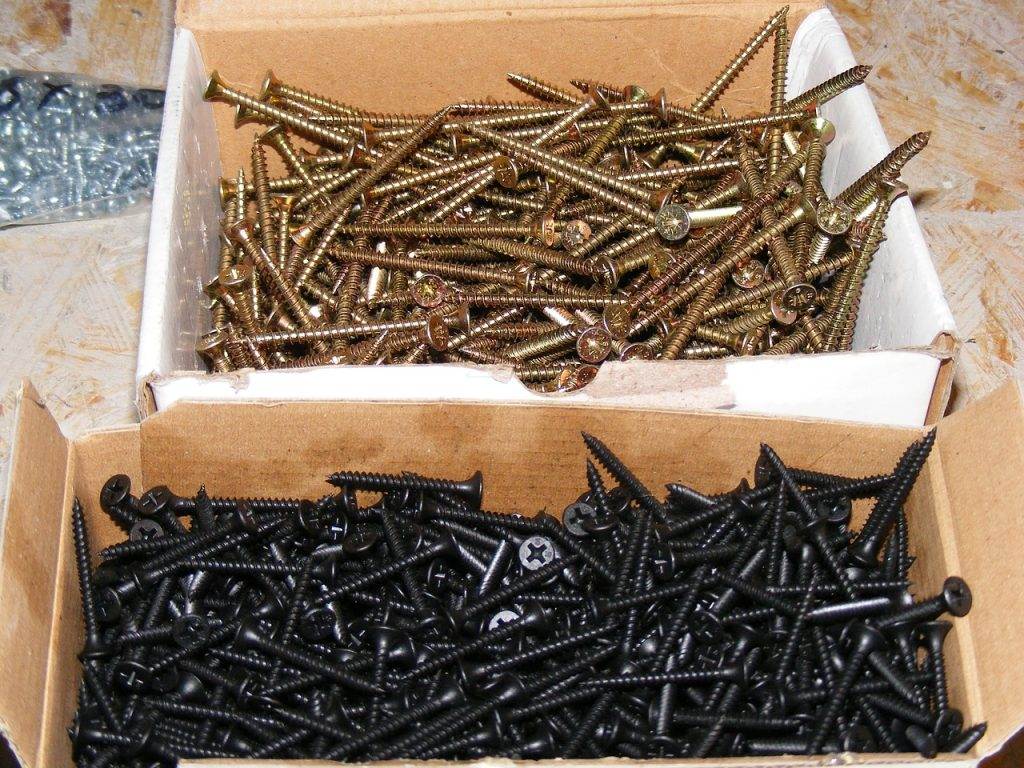
This image is property of pixabay.com.
Safety Considerations for DIY Installation
Proper Lifting Techniques
During the installation process, it is important to use proper lifting techniques to prevent injury. Impact windows and doors can be heavy and awkward to maneuver, so it is essential to use proper lifting techniques, such as bending the knees and using your leg muscles rather than straining your back.
Use of Protective Gear
When installing impact windows and doors, it is advisable to use protective gear such as gloves, safety glasses, and sturdy footwear. This can help to prevent injuries from sharp edges, flying debris, or accidental slips or falls.
Electrical Safety
If your DIY installation involves electrical work, it is crucial to prioritize electrical safety. Ensure that the power supply is switched off before working on any electrical components. If you are unsure or uncomfortable with electrical work, it is best to consult a professional electrician to avoid any potential hazards.
Working at Heights
If your DIY installation involves working at heights, it is essential to take proper safety precautions. Use appropriate safety equipment, such as harnesses or scaffolding, to prevent falls or injuries. Make sure to follow all safety guidelines and regulations when working at heights.
When DIY Installation is Not Recommended
Complex Window and Door Designs
If you have complex window and door designs, such as custom sizes or shapes, DIY installation may not be recommended. Complex designs often require specific knowledge, skills, and equipment that may be beyond the capabilities of a DIY installation. In these cases, it is best to hire professionals to ensure a proper and accurate installation.
Structural Modifications Required
If the installation of impact windows and doors requires structural modifications, such as resizing or reinforcing the openings, DIY installation may not be feasible. Structural modifications often require a deep understanding of construction principles and may also require permits or inspections. It is advisable to hire professionals who are experienced in structural modifications to ensure proper installation.
Limited Time or Availability
DIY installation can be a time-consuming process, requiring ample time and effort to complete. If you have limited time or availability due to work, family, or other commitments, DIY installation may not be practical. Hiring professionals allows you to delegate the task to experienced installers, saving you time and ensuring a timely completion.
Lack of Confidence or Experience
If you lack confidence or experience in DIY projects, particularly home improvement projects, it may be best to leave the installation of impact windows and doors to professionals. Improper installation can lead to costly mistakes and potential safety hazards. Hiring professionals provides the expertise and experience necessary for a successful installation.
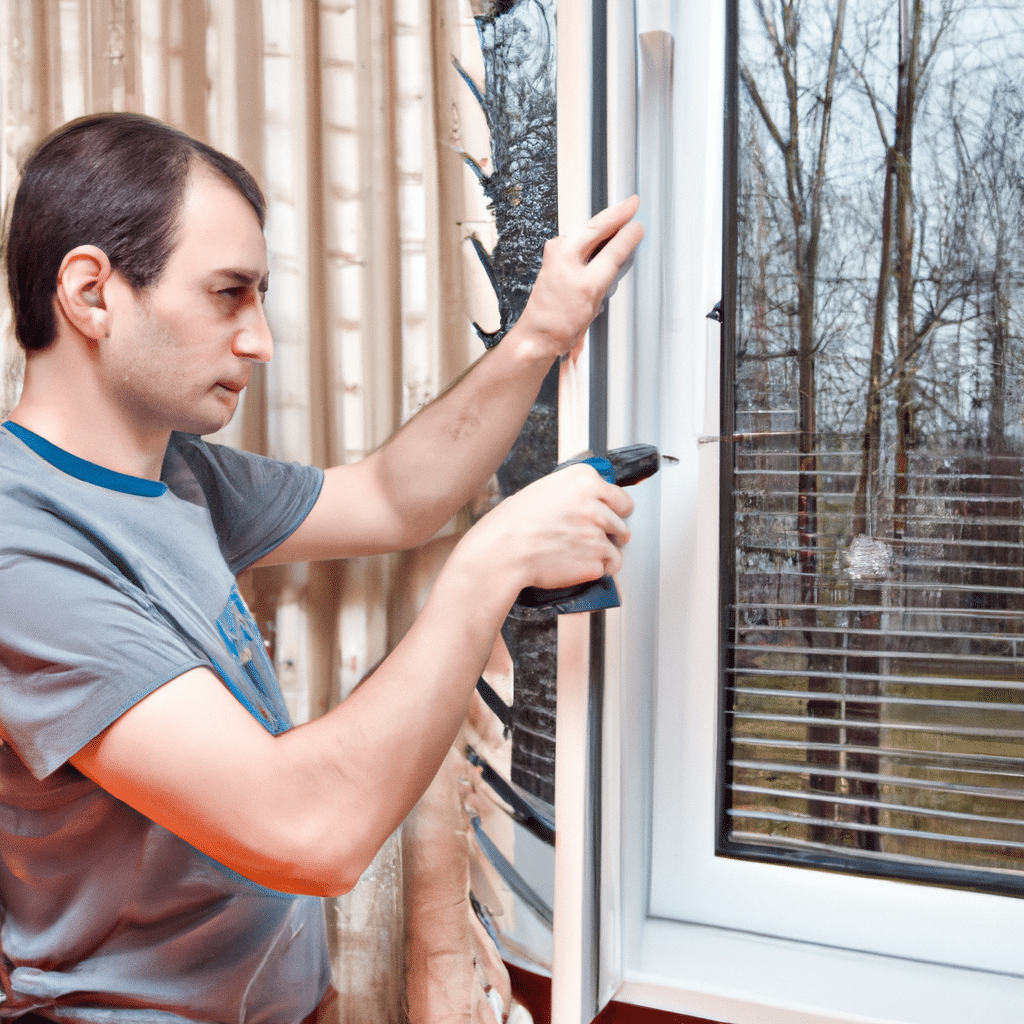
FAQs about DIY Installation of Impact Windows and Doors
1. Do I need special tools for installation?
Yes, installing impact windows and doors typically requires specific tools and equipment. These may include power tools, measuring devices, sealant applicators, and more. It is important to have the necessary tools or be prepared to purchase or rent them for the installation.
2. Can I install impact windows on my own if I’m not a professional contractor?
While DIY installation is possible for individuals without professional contracting experience, it is important to consider your skill level and familiarity with home improvement projects. Installing impact windows and doors requires a certain amount of skill and knowledge to ensure proper installation. If you are unsure or lack experience, it is best to hire professionals.
3. Will DIY installation affect the warranty coverage?
In some cases, DIY installation may void the warranty coverage provided by the manufacturer. It is important to carefully review the warranty terms and conditions before deciding on a DIY installation. Some manufacturers require professional installation to maintain warranty coverage.
4. How long does it take to install impact windows and doors?
The installation time for impact windows and doors can vary depending on factors such as the number of windows and doors, the complexity of the installation, and the skill level of the installer. On average, the installation process can take several hours to several days. It is important to allocate enough time for the installation and be prepared for any unexpected delays or challenges.
5. Are there any health risks associated with DIY installation?
DIY installation of impact windows and doors does not typically pose significant health risks. However, it is important to follow proper safety protocols and use protective gear to minimize the risk of injuries. If you have pre-existing health conditions or are unsure about your ability to handle the physical demands of the installation, it is best to consult with a professional or consider hiring professional installers.

